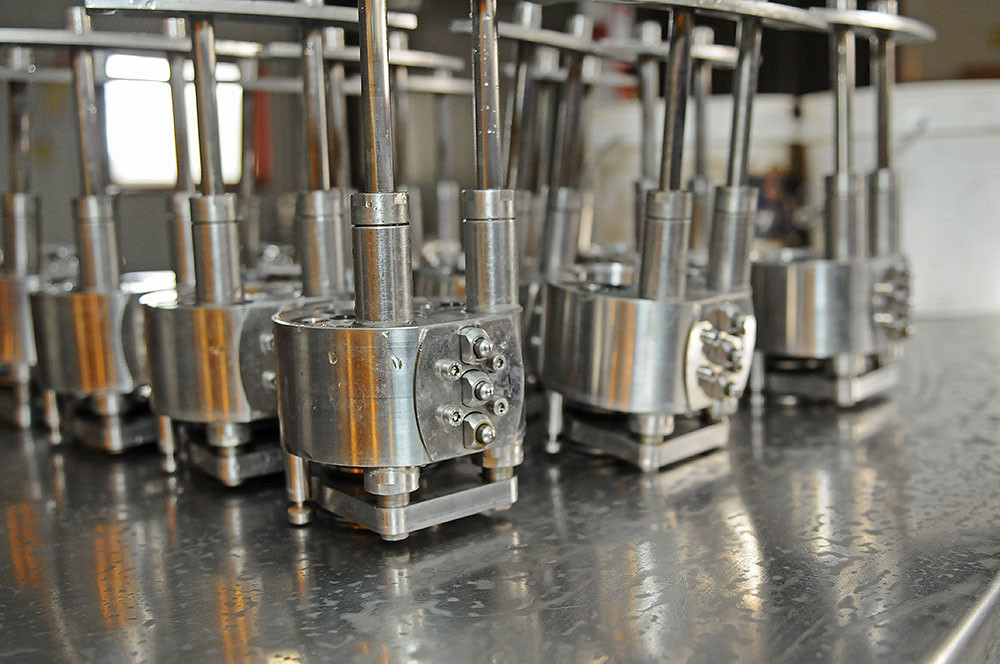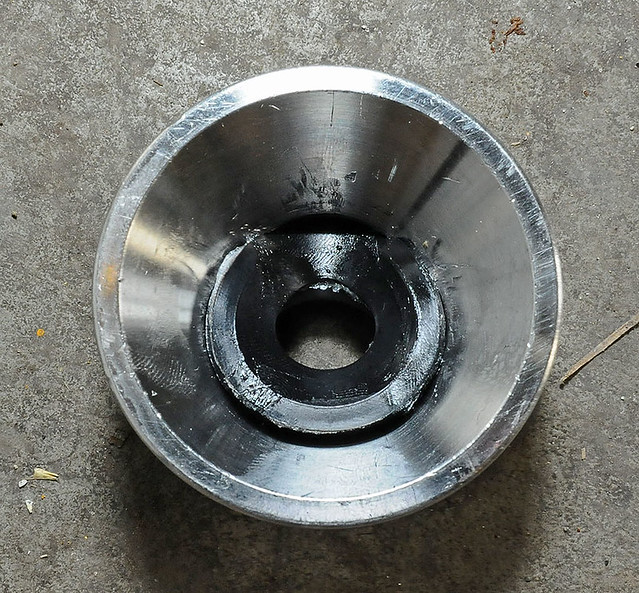Kyle--in trying to isolate which part of the head was causing the foaming, I switched out the internals--the product/equalizer valve assy--for one from another head. Problem solved.
As for the gushing at the beginning of the run, we have the same problem, especially during warm weather. Running the machine slowly (like 25-2600 b/hr) for the first few cases pretty much solves the problem. With the machine running at a lower speed, the snifter (ambient eq. valve) is open longer, this seems to help greatly. We're usually up to full speed after about 10 cases, until we hit the wall again at the end of the bright tank, when the warm, stratified beer at the top starts coming through (badly designed jackets). Then it's back to 2500 b/hr until the bright is empty.
The bent crown problem seems to be insolvable. One or two crowns every 1,000 bottles or so seems to be about as good as it gets. Wish we had that crown detector to stop the line when this happens as we waste too much product before someone notices that there are no crowns on the bottles--we run a very short crew. Foamy beer seems to make the problem worse, and carefully cleaning the lower crown channel--the part that pivots down--and drying it seems to help.
As for the gushing at the beginning of the run, we have the same problem, especially during warm weather. Running the machine slowly (like 25-2600 b/hr) for the first few cases pretty much solves the problem. With the machine running at a lower speed, the snifter (ambient eq. valve) is open longer, this seems to help greatly. We're usually up to full speed after about 10 cases, until we hit the wall again at the end of the bright tank, when the warm, stratified beer at the top starts coming through (badly designed jackets). Then it's back to 2500 b/hr until the bright is empty.
The bent crown problem seems to be insolvable. One or two crowns every 1,000 bottles or so seems to be about as good as it gets. Wish we had that crown detector to stop the line when this happens as we waste too much product before someone notices that there are no crowns on the bottles--we run a very short crew. Foamy beer seems to make the problem worse, and carefully cleaning the lower crown channel--the part that pivots down--and drying it seems to help.






















Comment